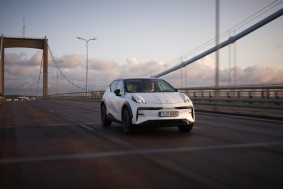Long-term plans to deliver a rail revolution for the West Midlands including delivery of the Midlands Rail Hub and proposals for new railway stations are included in a revised Rail Investment Strategy just published.
The Strategy, initially published in 2018, set out how to maximise the benefits of HS2, support the region’s net-zero carbon ambitions and proposed a coordinated plan for the enhancement of existing services and the development of new rail infrastructure, including new stations and new rail lines. Several projects are already being delivered including five new stations – three on the Camp Hill Line in Birmingham and two on the Walsall to Wolverhampton Line, as well as the redevelopment of Coventry, Wolverhampton, University and Perry Barr Stations. Plans for a station at Aldridge are also in development.
The West Midlands Rail Executive (WMRE) has, following extensive consultation, revised the strategy to take account of the considerable work already undertaken over the last five years and the impact of the Covid 19 pandemic, including changes in travel patterns. The revised Rail Investment Strategy puts forward a coherent vision for improvement and development of the region’s rail network over the medium to long-term.
Plans include:
- Removing diesel trains from out network and supporting further line electrification
- Development of the Midlands Rail Hub to create additional capacity for more services across the region – including on the the Sutton Park Line
- How, as London to Birmingham passengers move to HS2, spare line capacity can be used on the West Coast Mainline to improve local and regional services between Birmingham and Rugby.
- Providing a train service between Burton and Lichfield, calling at Alrewas
- Longer term plans for new rails including between Walsall and Lichfield and through Central Birmingham
There were more than 330 responses to the consultation and feedback included a series of key areas such as better integration with other transportation modes, improved rail network accessibility, more efficient ticketing systems and a focus on electrifying all lines.
Andy Street, Mayor of the West Midlands and WMRE Chair, said: “Rail has an absolutely central role to play in our region’s success. New rail links and stations generate jobs for local people and prosperity for local communities. At the same time – by providing a sustainable car alternative – rail helps us to tackle the climate emergency and meet our #WM2041 net zero commitment.
“Since the first strategy was published five years ago, we’ve made tangible progress – drawing in more than £200 million in funding for new and redeveloped stations.
“Alongside our own substantial programme of investment, it’s vital for the West Midlands that both HS2 and the Midlands Rail Hub are completed - providing the much needed extra capacity required to improve services for residents right across our region and give them a rail network that is truly fit for the future.”
The Strategy outlines eight strategic objectives:
- To support the recovery from Covid-19
- To contribute to net zero
- To deliver Midlands Rail Hub
- To maximise the benefits of HS2 to the West Midlands
- To develop high growth corridors whilst reducing social deprivation and levelling up
- To maximise access to the rail network
- To support the movement of goods by rail
- To consider radical change in the long-term
Councellor Peter Butlin, WMRE’s accountable director for rail infrastructure investment, said: “An enhanced, fit-for-purpose rail network doesn’t just benefit the major cities, it helps spread investment and improve the quality of life across the entire wider region from Shropshire and Staffordshire to West Northamptonshire and Warwickshire.
“Our regional rail network must have the future capacity and capability required to meet future demand for travel and provide access to employment, education, healthcare and leisure opportunities for all of our citizens.”












